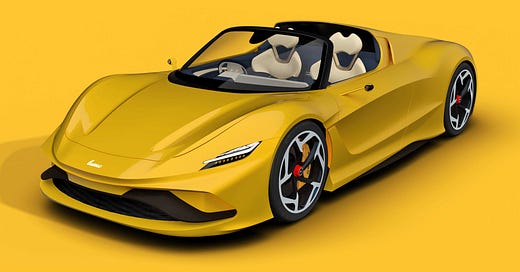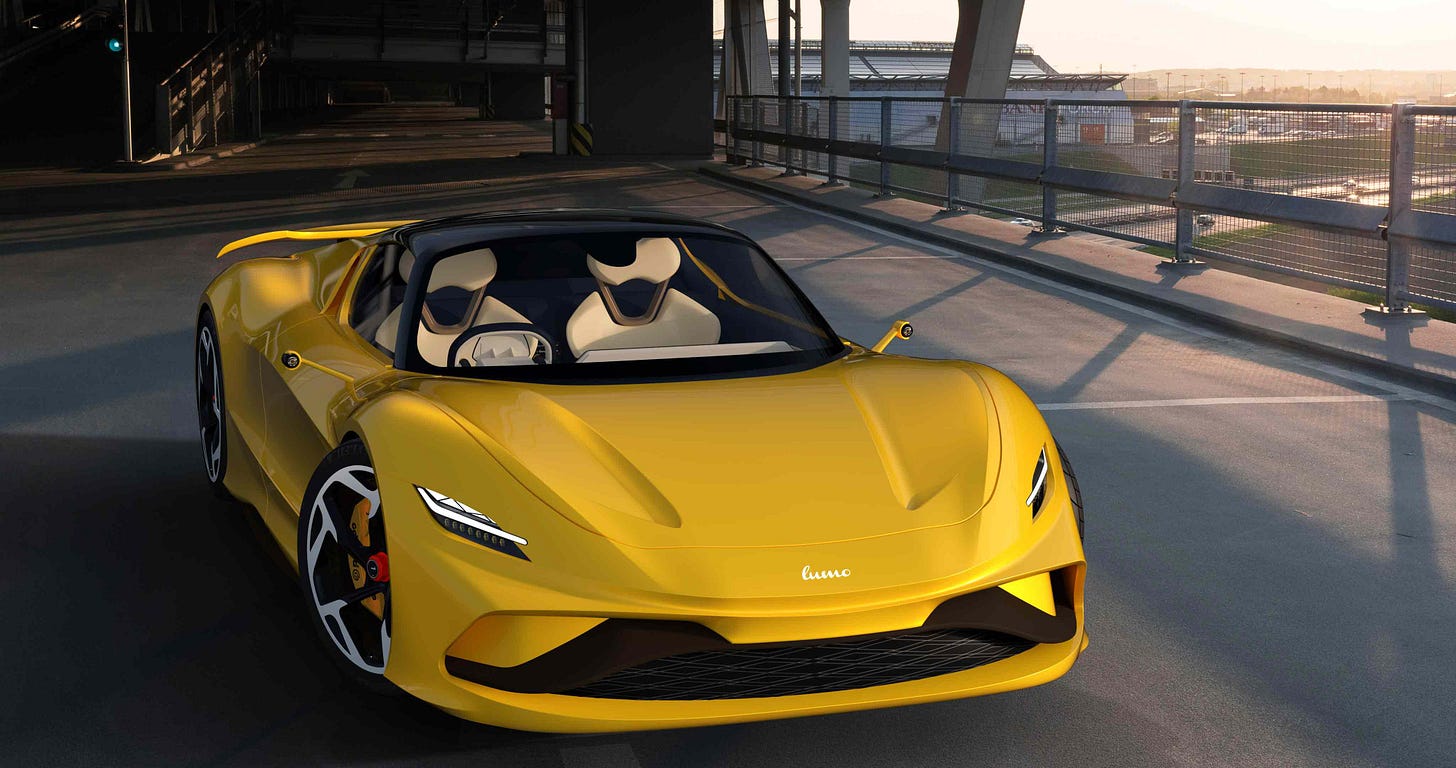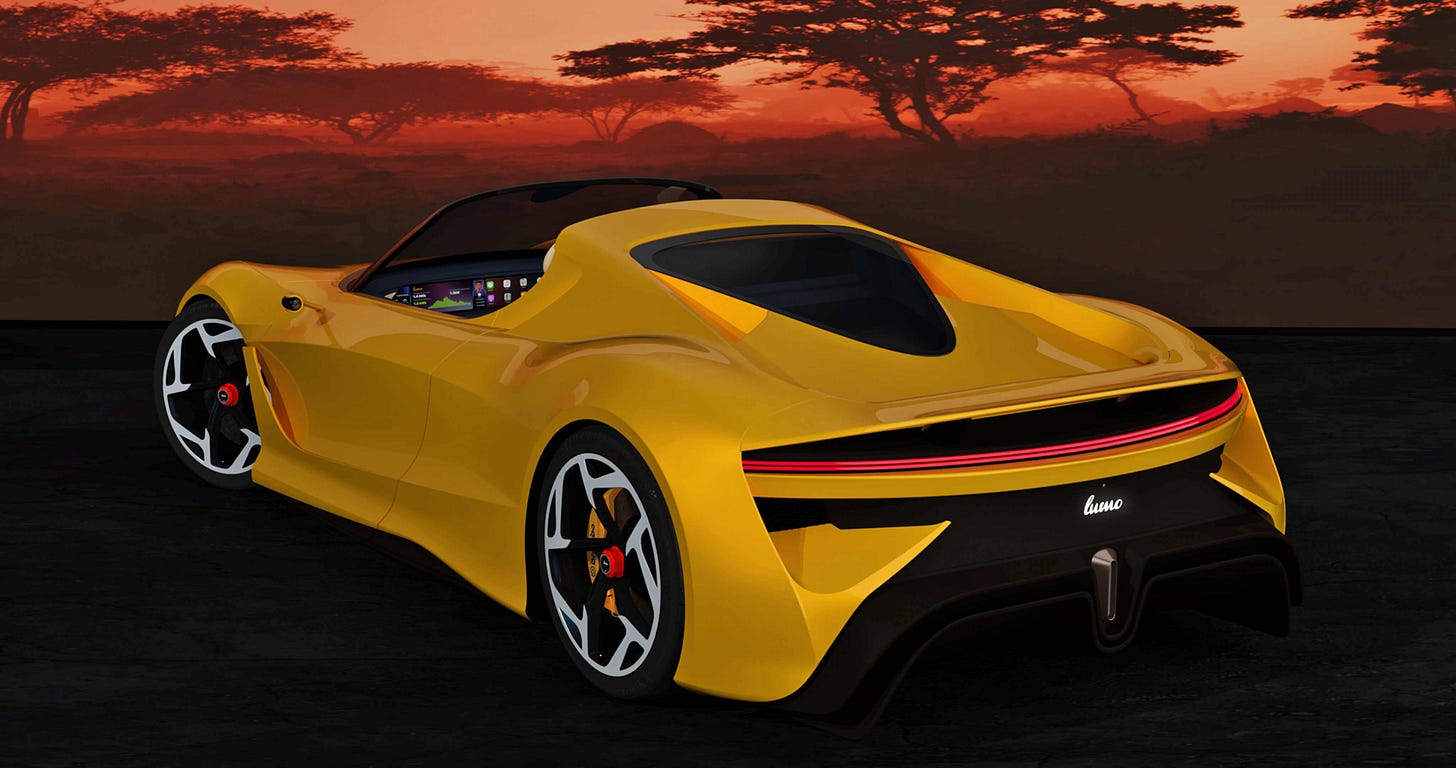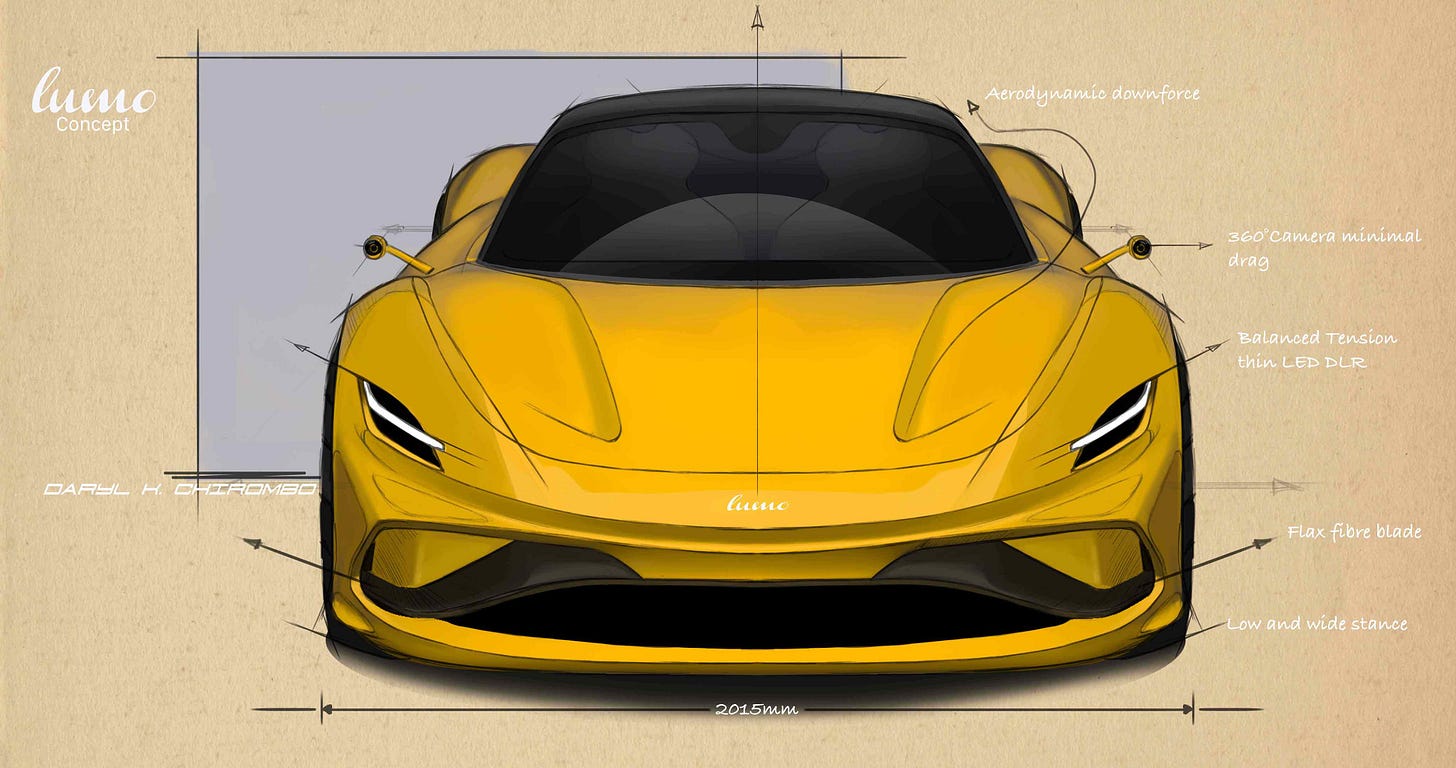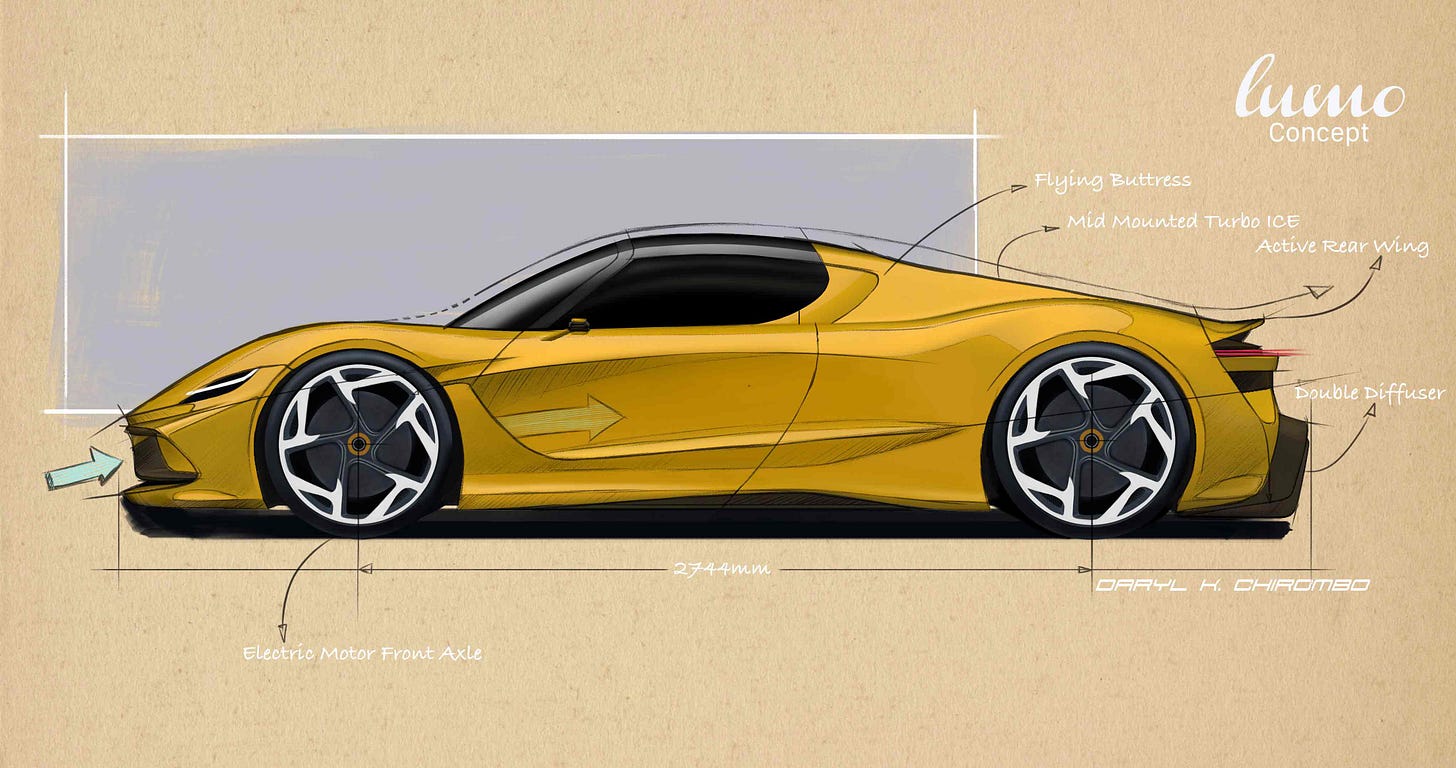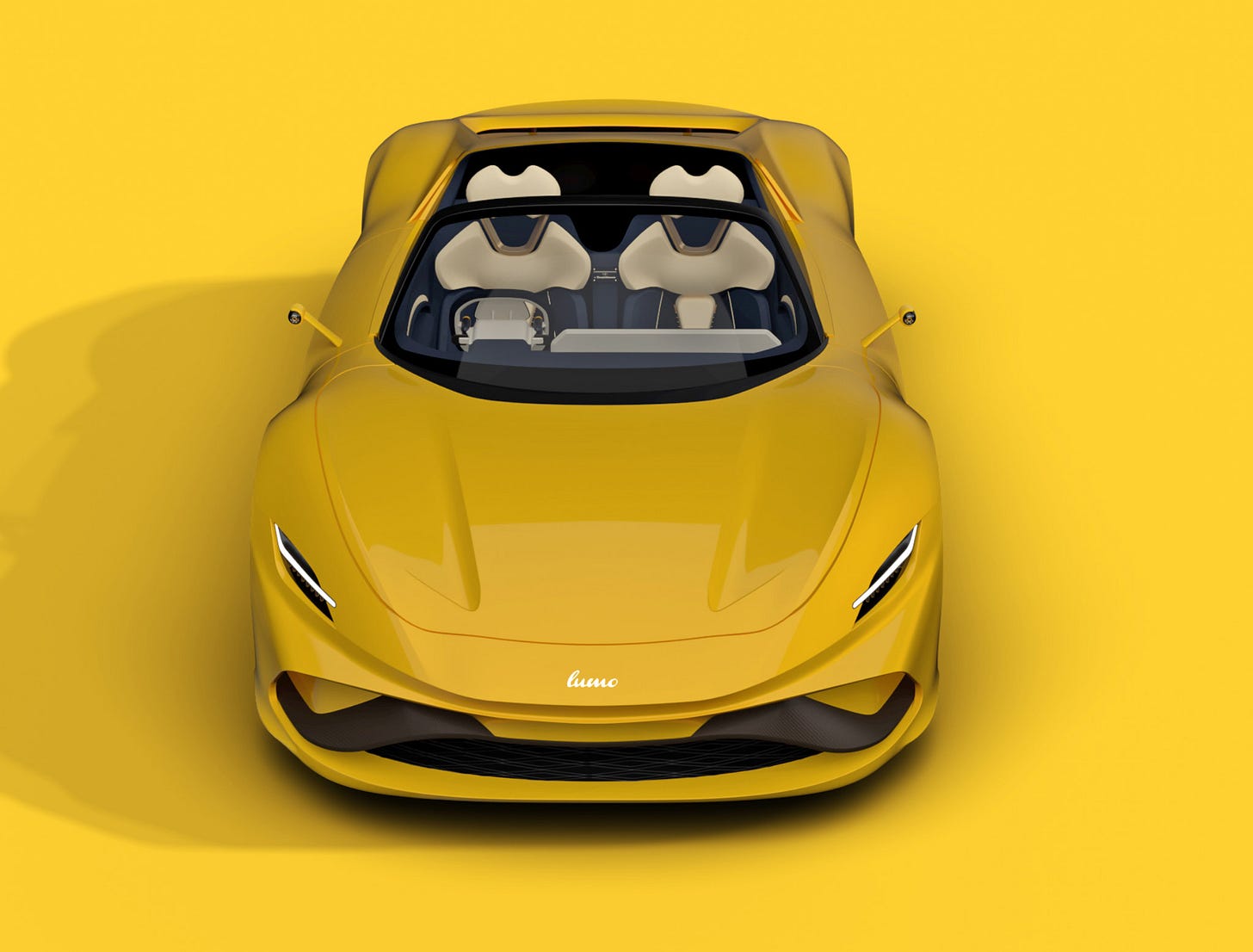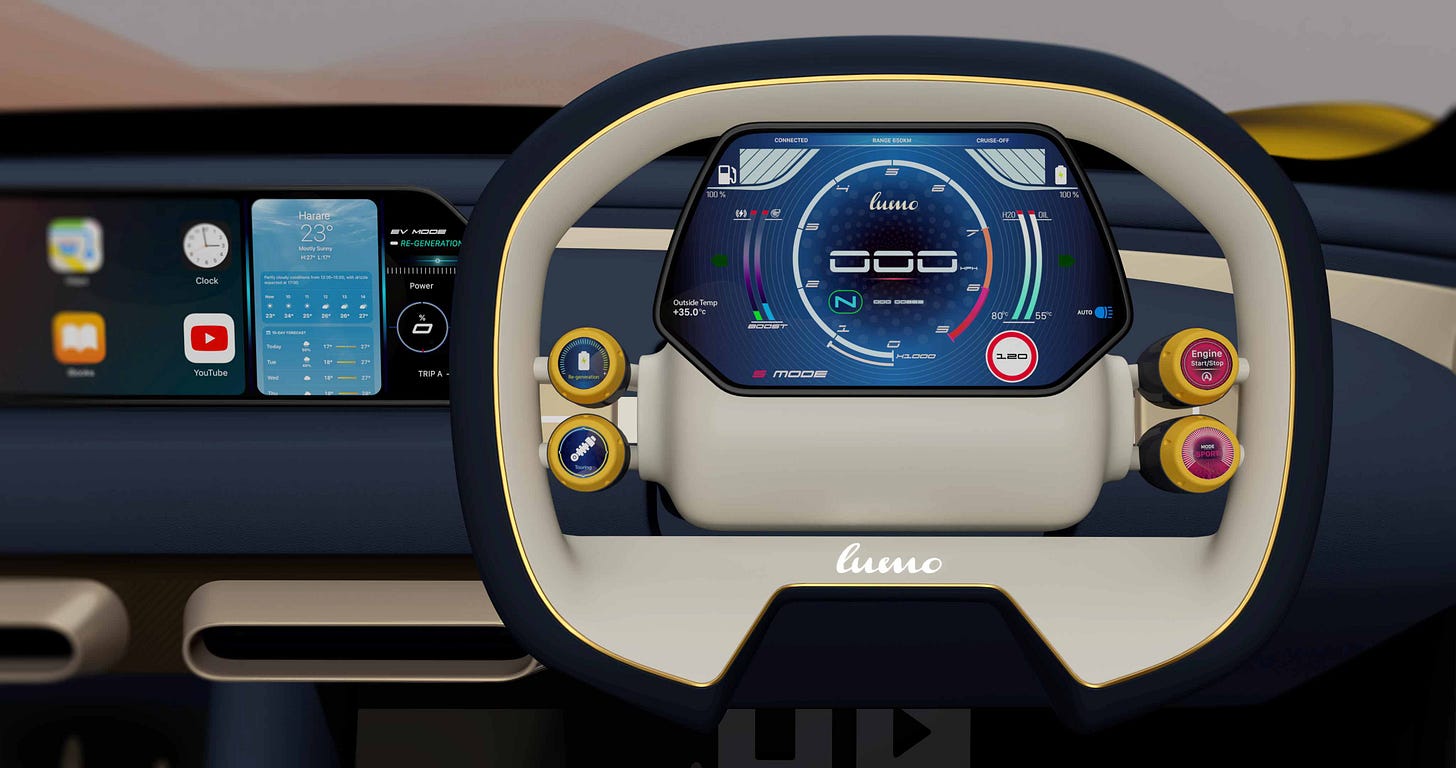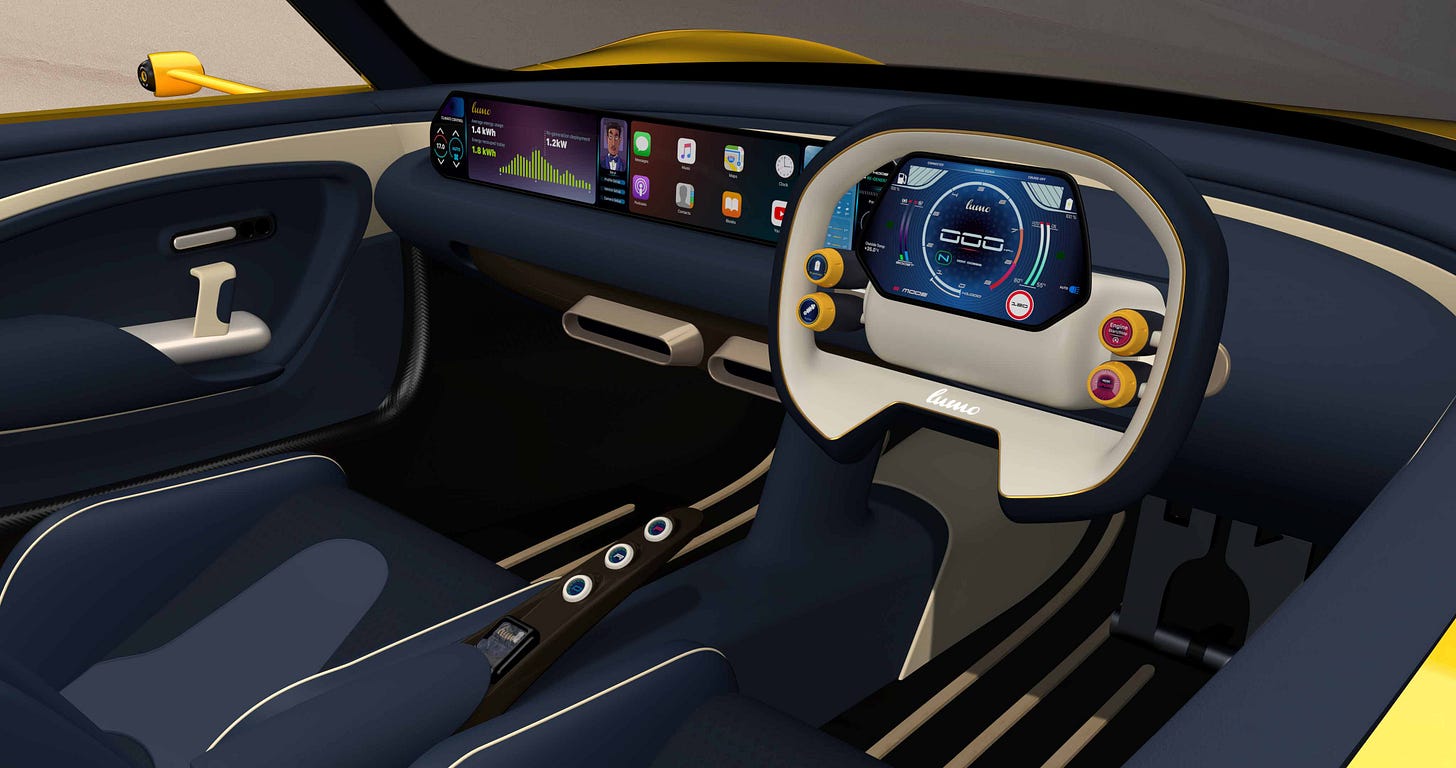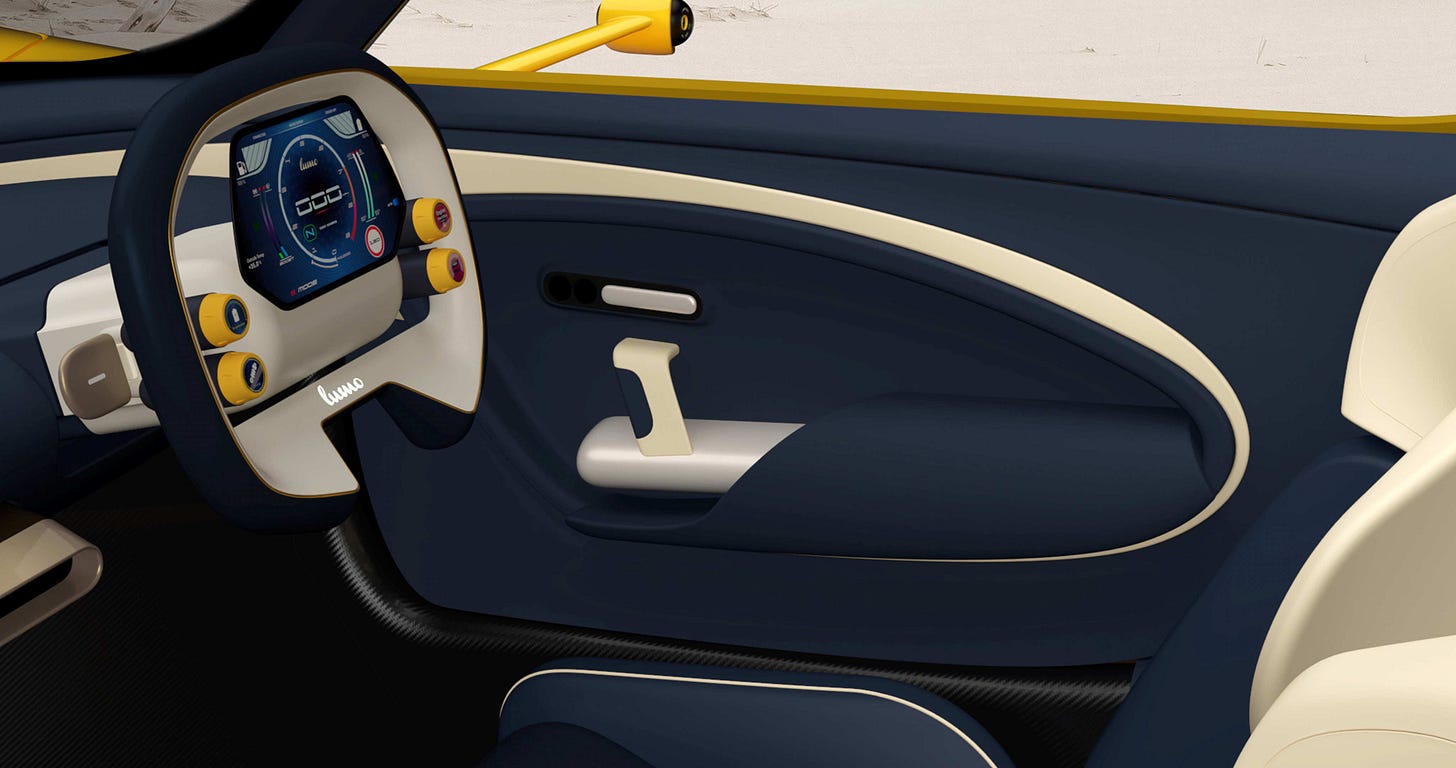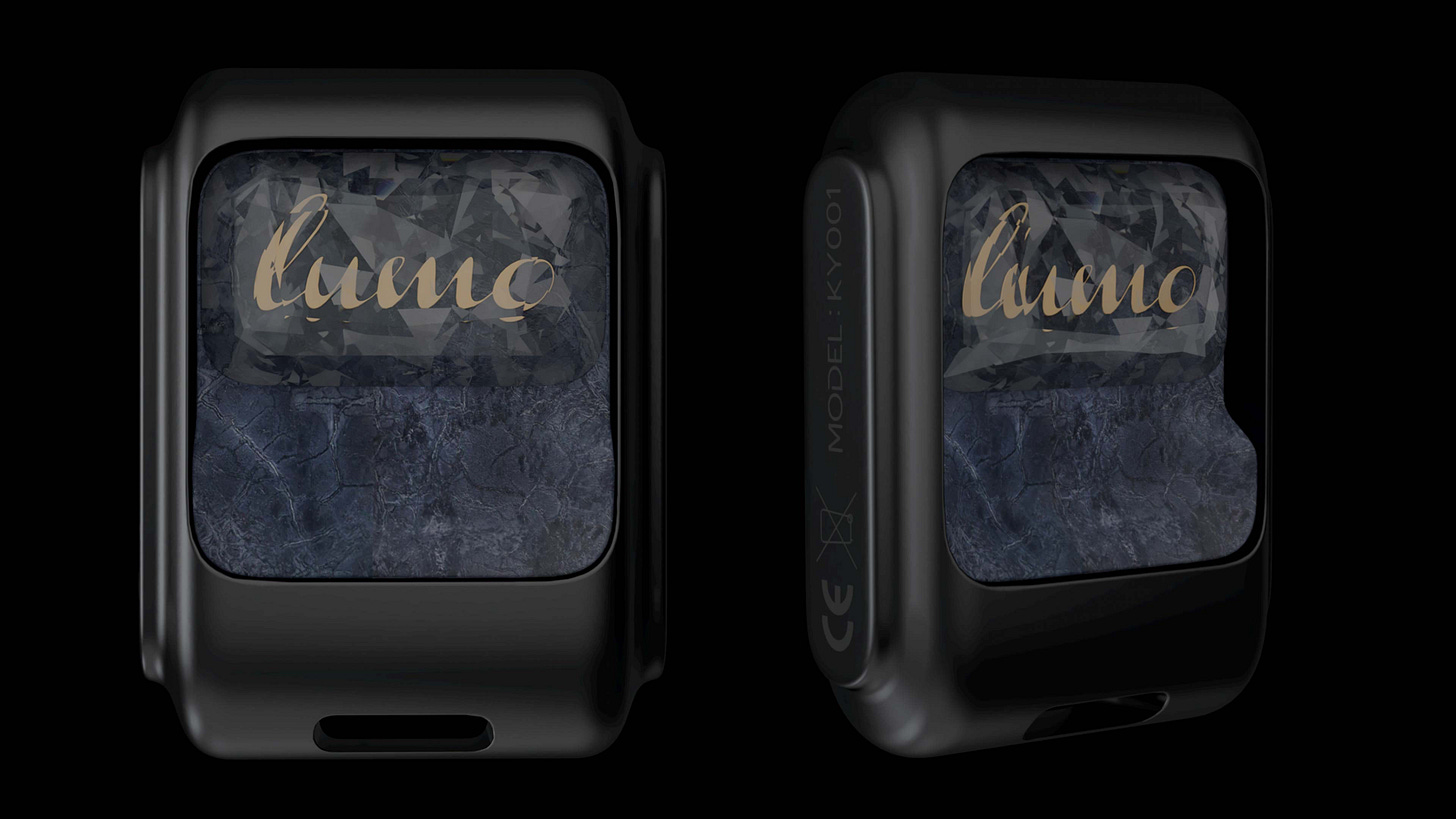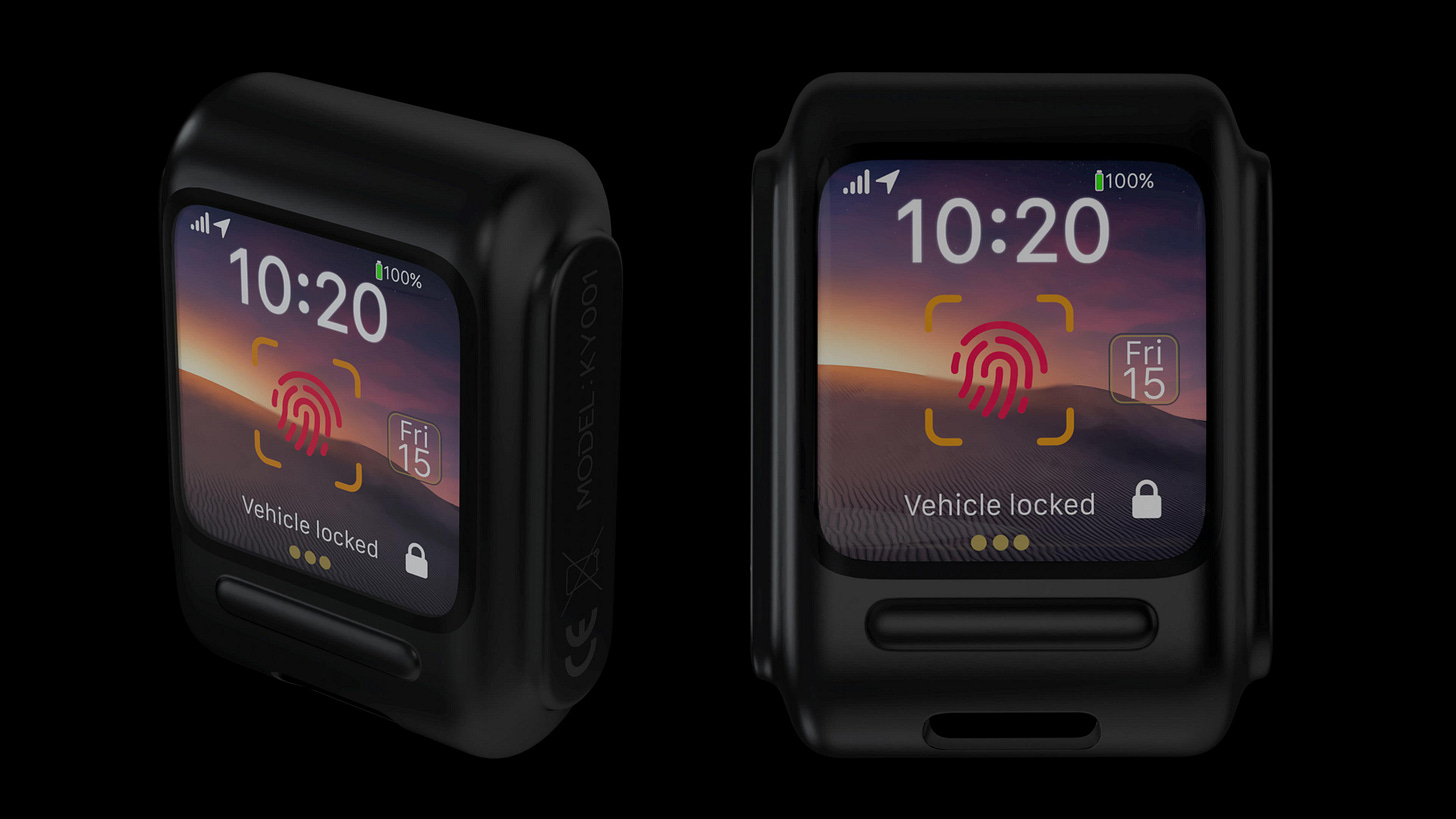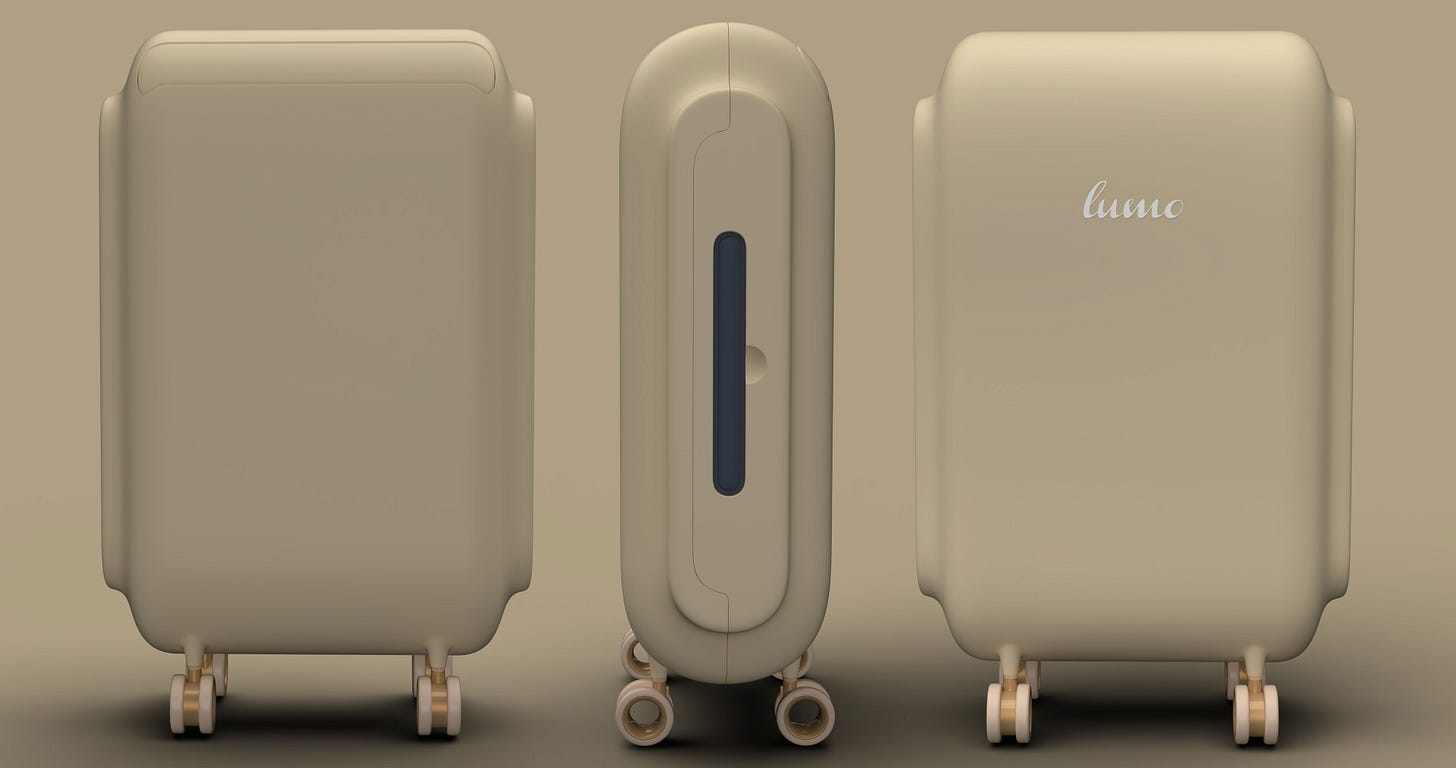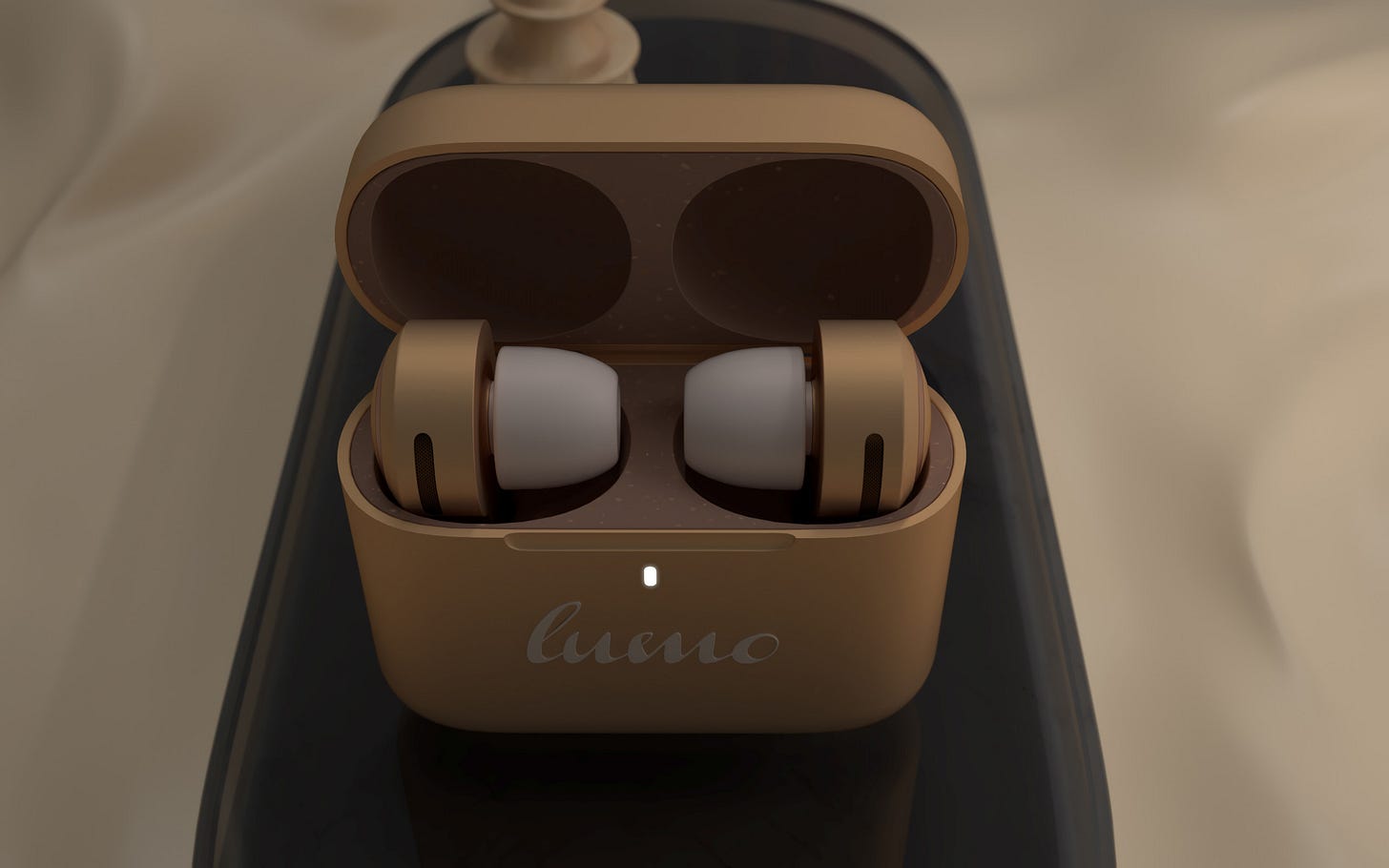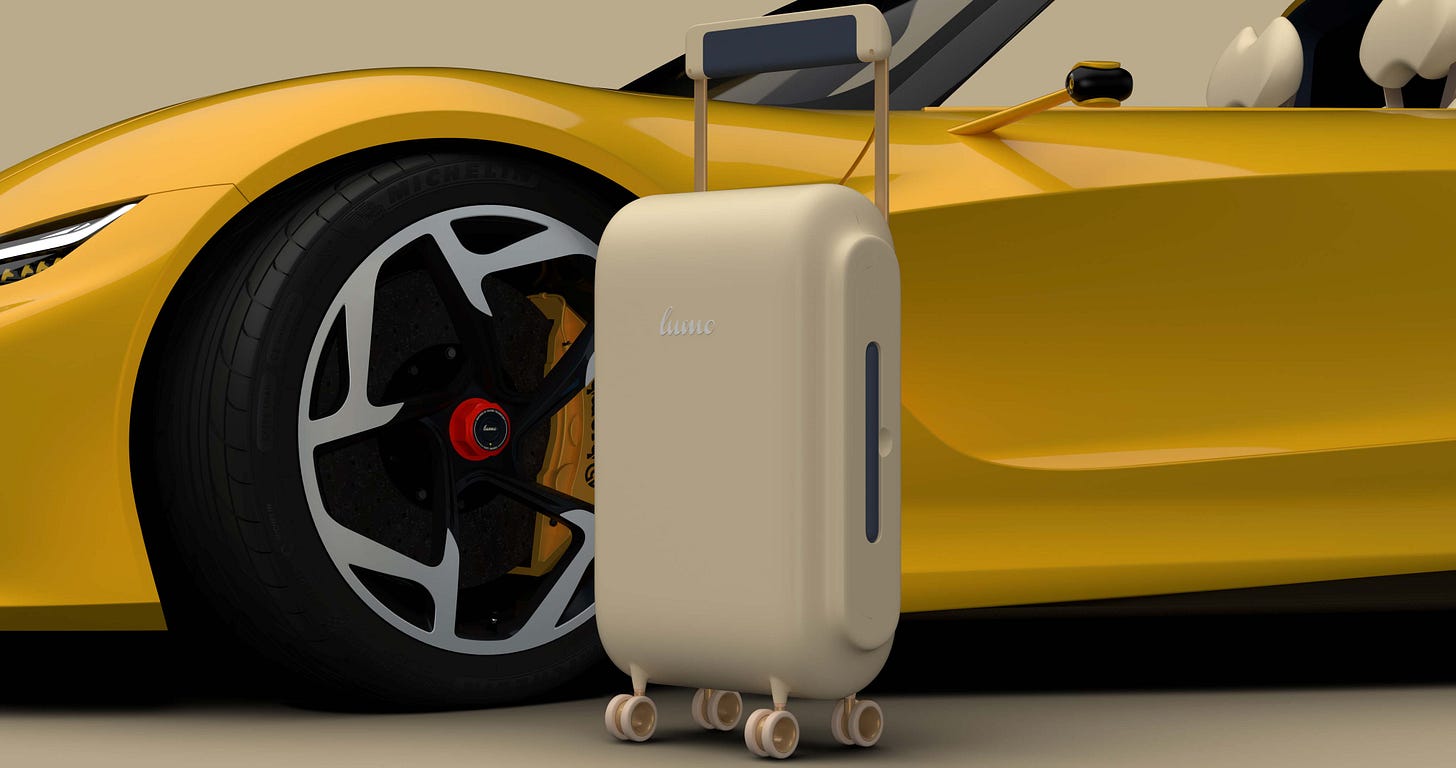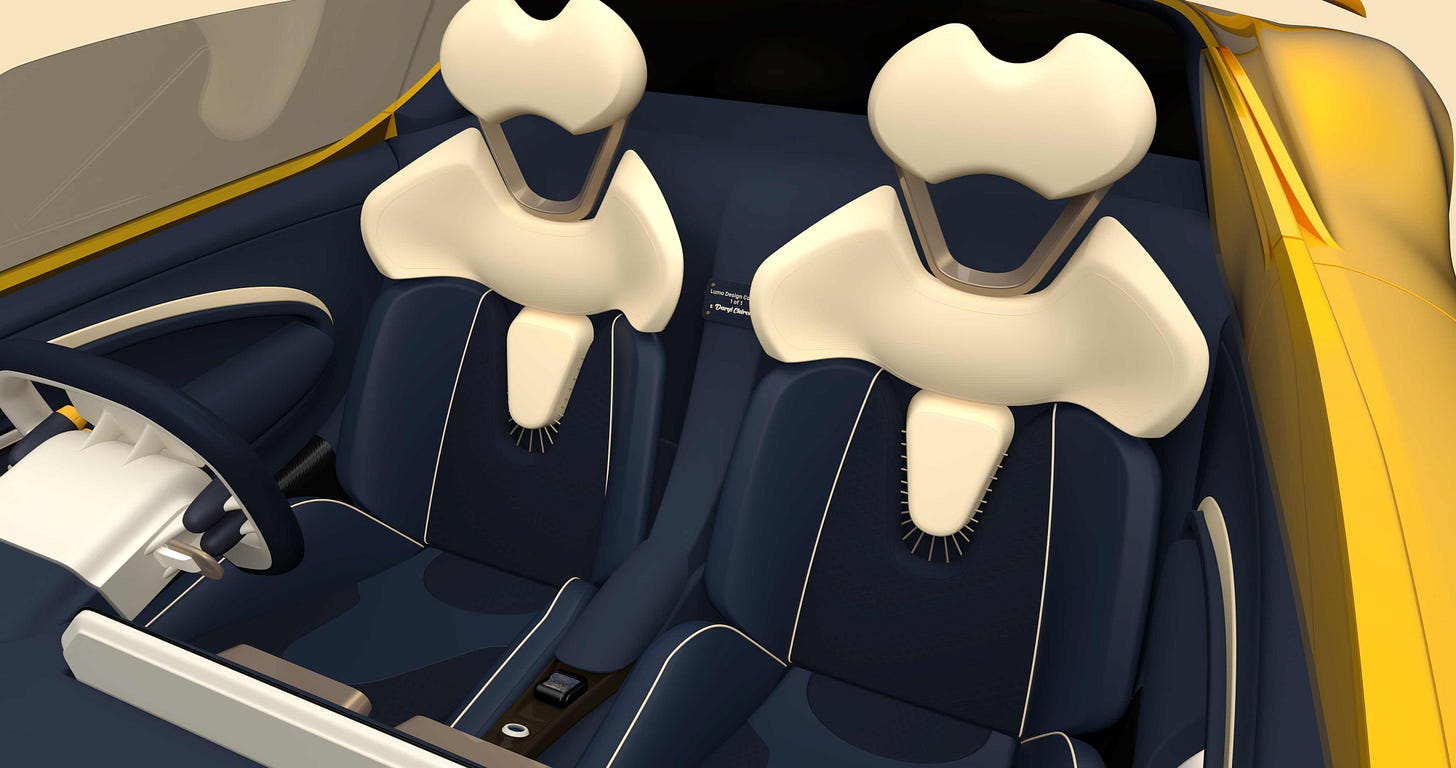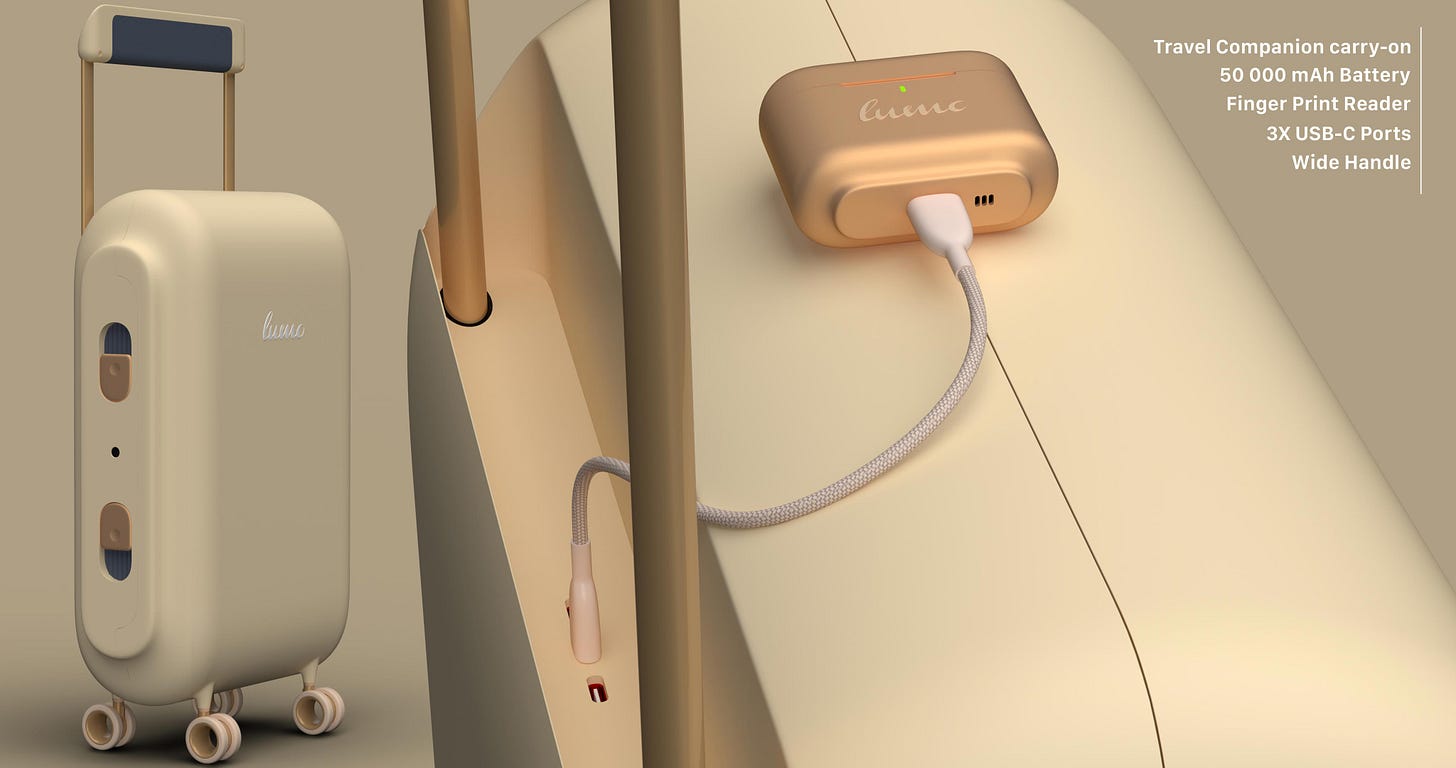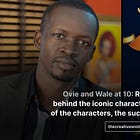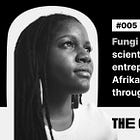Luxurious Urban Mobility (LUMO): Useful desirability approach to car design in Africa
Daryl K. Chirombo, a Zimbabwean industrial designer, shares his design approach, philosophy, and rationale for Luxurious Urban Mobility (LUMO).
A large percentage of cars driven in Africa are imported and used. For example, in the last three months of 2023, Nigeria imported used vehicles valued at N121.82 billion, according to the National Bureau of Statistics (NBS) foreign trade report for 2023. This was almost double the value of vehicle imports recorded in the same period of 2022 at N65.19 billion.
Most Africans have to turn to imported second-hand cars because the design and manufacturing of affordable cars are not commonplace on the continent. While countries like South Africa, Nigeria, Egypt, Kenya, and Ghana offer assembly plants for international OEMs, there aren’t dedicated design studios, according to Daryl K. Chirombo, an Industrial designer from Zimbabwe.
“There is a plethora of reasons why this may be. A gander within the African context illustrates how profound challenges stretch out before us,” says Chirombo, a first-class graduate of Industrial Design and Transport and Automotive Design.
For the Luxurious Urban Mobility - LUMO concept, Chirombo, who won the second prize in the Mureza Auto Car Design & Innovation Talent Quest for Africa in 2021, attempts to answer the question: What if things could be different?
“The idea for this design project was centred around a dream phrased as a question, a “what if” situation if you may. What if something aesthetic that would be low volume, bespoke with the bells and whistles known as the Luxurious Urban Mobility - LUMO concept could be created as a future vision from Africa to the world?” Chirombo shares.
Read Also: African Flags and Who Designed Them (Part 1)
Using design, he says, he wants to solve the problems around unemployment, sustainability and technological lag. “With every design project, there has to be relevancy. We live in a world where sustainability is a topic that requires serious thought and consideration particularly when it comes to design and making. Being an African native, my home country is somewhat lagging behind technologically,” says Chirombo. “This concept idea aims to explore different sustainability measures from material philosophy to propulsion technology and perhaps bring awareness within the African community to the possibilities that come from the utilisation of composite natural fibres and bioplastics in Industrial design.”
Looking at his home country Zimbabwe as a case study, he says, rampant levels of unemployment are the norm. “With such an environment one is motivated to try and navigate a way to create employment or better yet bring awareness of the benefits that technology can offer,” he says.
By looking at alternative materials, we can open doors to new design and manufacturing possibilities for the African environment, says Chirombo. “For example, with the availability of waste avocado pits, and vast expanses of land, flax seed farming and bioplastic production, there could be a potential future industry that would open up various channels of employment, spawning processing factories and manufacturing plants,” he explains. “Bioplastics and flax fibres in conjunction with bio-resins could lead to the production of sustainable products that can improve the lives of people.”
In the note below, Chirombo shares his design approach, philosophy, and rationale.
Design Approach
But why is this design important in our world? I am of the thinking that design is a subject that affects our daily lives. It is a subject integral to our survival and comfort. Therefore, in my opinion, bad design inconveniences us. In a sense, it slows us down as a species. We live in a world of throw-away culture and in my view, the reason for this is due to badly designed things that are cheap, non-aesthetic, carelessly made and which do not last.
To combat this, I am of the opinion that there is a strong sense of timelessness and value in simplicity; both in aesthetics, form and function. That said simple things tend to be quite complex. However, if we focus on what matters and develop on that, the result has the potential to be great.
Part of my design philosophy revolves around the idea of provoking emotional responses, ensuing a sense of fulfilment in ownership of a product. For the most part, creations made in Africa are very ornamental and decorative. Consider the handmade pots, carved wooden sticks, carved stone sculptures, wire art, traditional instruments etc. In my view, one has to somewhat counter this Idea, to create a product that serves a purpose efficiently and effectively without too many decorations but still feels modern and African. A philosophy of creating useful desirability.
Africa is known for its craft. However, in most cases, there is an apparent lack of precision in the final outcome. I guess that is acceptable for ideas pursuing an abstract feel or a handmade feel. However, for this design concept, precision was of utmost importance.
Taking inspiration from sculpture, I employed a form language comprising soft fluid volumes for the exterior design of the vehicle, echoing a muscular feel matched with sharp precision lines that accentuate the design. As a vehicle that would achieve high speed, aerodynamic considerations were important. Therefore, influences from motorsport are implemented around the vehicle. I wanted to keep the design silhouette clean and simple, so I integrated a flying buttress and an active rear wing with an F1-inspired double diffuser.
The philosophy of useful desirability is further explored with the vehicle having a removable roof giving the user two vehicles in one. To pay homage to African textiles I have included some geometric elements within the headlight details and some interior details. The majority of the vehicle body construction material of choice is flax seed fibre with other hard points made from aluminium alloys. I chose to explore flax seed fibre material as it consumes 75% less energy than that of producing the components in carbon fibre and it is a green and sustainable material. However, the main monocoque tub is made from carbon fibre for its proven use regarding safety and rigidity as seen in motorsport racing.
Read Also: Is it a design problem or a customer’s problem?
The interior design is meant to compliment the sculptural exterior offering a more product- techno design approach but maintaining a strong aesthetic. The interior pays homage to traditional materials like wood, metal and leather which are materials used in various African crafts. A touch of gold on the techno steering wheel blends tradition and modernity.
The inspiration for the seat design hails from African royal traditional thrones and traditional neck jewellery worn by royals. In the modern world, we live in, it is important to have connectivity, therefore I employed a wide-screen OLED touchscreen that displays the vehicle information complete with media controls and Apple car play.
The vehicle uses cameras instead of traditional mirrors which provide a 360-degree view for enhanced visuals and vehicle security.
Read Also: 10 African digital products and platforms you should know and use as a creative/creator
Mobility Design
Electric mobility is the next evolution and it is vital in our society, however, if load shedding has taught us anything, it is that as Africans, we cannot solely operate electric vehicles due to energy constraints in our power generation infrastructure. The solution I have chosen to propel the vehicle is a hybrid system that utilises bio-fuels and synthetic e-fuels such as those being developed by German OEM’s to power the ICE on the rear axle in conjunction with an electric motor and battery system to power the front axle.
However, understanding that infrastructure in developed countries supports EVs customers would have a choice between an ICE engine and a full EV variant.
Key Fob Design
The idea behind the key fob design is that of returning to the roots of craft. Africa is renowned for its sculptures emanating from stone and wood. In the same breath, the Lumo vehicle is placed as a luxury super sports car therefore, the main ticket to activating and entering the luxurious experience offered by the vehicle is the key fob. Considering that Africa is rich in mineral resources, such as diamond and gold which are considered to be also luxurious items, the thinking behind the key fob was to create a jewellery piece utilising materials that aren’t usually found in a key fob. This idea would give employment opportunities to those in the jewellery-making industry.
Read Also: How To Build Meaningful Relationships As A Creative
However, because the meaning of luxury has transcended into modernity it was vital to integrate technology into the jewellery. The key fob will be milled from recycled aluminium for the outer case. The gemstone will be cut from goshenite a common stone in Zimbabwe and the insert sculpted stone will be made of soapstone found in South Africa. To further enhance the idea of jewellery, the logo will be embedded within the soapstone and will be made from gold. On the other side of the key fob is the control centre which will be an OLED touch screen with a toughened sapphire glass cover.
Travel Companion Design
As mentioned earlier the Lumo is meant to be bespoke, complete with accessories. Within this framework are two products. The earbuds and the travel carry-on suitcase.
(a) The suitcase design echoes the philosophy of useful desirability with a strong focus on sustainability and simplicity. The construction material of choice for the main form is reinforced flax seed natural fibre to give a lightweight and strong result. The form language is consistent with the product-techno feel of the vehicle interior, with elements such as the steering wheel, paddle shifters, key fob and earbuds case following the same foundational form language.
The bag will be smart. It will have a fingerprint reader as the main way to unlock it. It will be linked to an App that will also unlock the bag with Face ID, and passcodes in the App. The bag will feature inbuilt GPS tracking for peace of mind. To maintain a clean look, the hinges will be mounted inside the bag.
The silicon and recycled aluminium wheels are removable for a smaller form factor. The bag will feature an Airline safety regulation conforming 50 000 mAh battery pack for charging external devices. The handle will be created from bio-plastics derived from avocado pits a fruit that we consume regularly in our households and restaurants. The grip surfaces will be made from silicon with unique textures to provide a soft but durable feel.
(b) The earbud design borrows heavily from simple African geometric design. The idea was to create a form that is familiar and recognisable as an earbud. With inspiration from a doctor’s ear scope and a gold bar, I crafted a simple but effective form. Furthermore, this form factor allows for a bigger battery resulting in longer playback. One of the earbud innovations is a health-related one, that of an ear wax sensor, utilising the projection and subsequent return measurement of sound waves within the ear canal, which will alert the user through an App that it may be time to clean up.
The exterior of the bud also features a rose gold-plated ring to further echo the luxuriousness inside which, a button to operate the buds manually is situated. The area in which the speaker and ear wax sensor are located is bulky to allow more room for sound to resonate and create good levels of bass since some earbuds suffer from a lack of it. The material of choice is bioplastic for lightweight in a gold-like brushed surface finish that exudes luxury. The outer case is made from recycled brushed aluminium for durability with a recycled silicone rubber insert that houses the earbuds.


